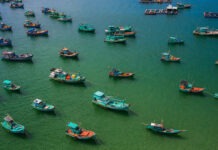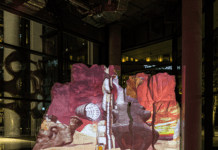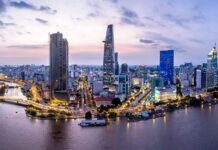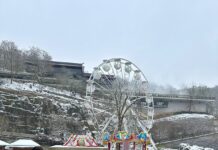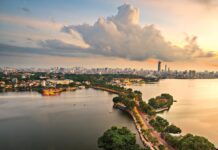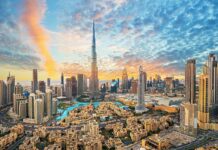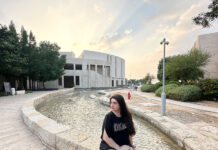North Cyprus boasts two of the island’s best-looking towns (Girne and Gazimağusa), half the capital city (Lefkosia/Lefkoşa), three of its mightiest Crusader castles (St Hilarion, Buffavento and Kantara), and arguably the island’s most significant archeological site at Salamis.
Its wilderness areas, particularly the Kyrenia Mountains, are a hiker’s paradise and many of its beaches remain mercifully free of high-rise resorts. Furthermore, any visit to Cyprus which includes both sides of the island offers the unique experience of two very different cultures. In northern Cyprus, you will see a rich cultural and natural heritage with Turkish influences. Here are the best places to visit.

Lefkosa: Lefkosa (the northern half of what was, before 1974, Nicosia) is the capital city of north Cyprus. As with its southern counterpart, the old town is hemmed by Venetian walls, with the majority of Lefkosa’s modern buildings and administrative machinery located outside the walls, and most tourist attractions to be found in the old town within the walls. Among the main attractions are Buyuk Han, a beautifully renovated sixteenth-century merchants’ inn.
Museums to look out for include the Mevlevî Tekke and Lapidary museums and the Dervis Paşa Mansion. The places of interest include the Samanbahçe Quarter, and the improving Arabhmet Quarter, while fascinating religious sites include the huge Selimiye Mosque, visible north and south of the Green Line. Beside it is the ornately Gothic Bedestan, once a Christian church, now a performance venue. Other sights among them are the National Struggle Museum, the Museum of Barbarism and the giant flags looming on the hillside behind the city are quite spectacular.

Girne: Girne (still widely known by its Greek name Kyrenia or Keryneia) is the most beautiful town in Cyprus, owing to its amazing harbor, mighty Venetian castle, and a backdrop of sharp and craggy mountains. Apart from the harbor and the castle, there is much else hidden away amongst Girne’s steep serpentine alleys. The Anglican Church, the Cafer Paşa Camii, the Ottoman Cemetery and the Chrysopolitissa Church attest to the spiritual life of the town; the tiny Folk Art Museum and Icon Museum to its cultural life, and the Bandabuliya together with a host of shops to its commercial side. Finally, Girne’s numerous cafés and restaurants offer the opportunity to eat, drink and socialize with friendly locals, or just enjoy the views and the chance to people-watch in comfort.

Gazimagusa (Famagusta): The charming city of Gazimagusa (Famagusta), boasts an atmospheric old town surrounded by crumbling Venetian walls, a legacy of its strategic position facing the Middle East. Its shops, restaurants and cafés are threaded through and between the photogenic remains of churches destroyed or damaged during the Ottoman siege of 1570–71. Immediately to the south lies the ghost town of Varosha, once the heart of Famagusta’s tourist trade, now isolated by the Turkish invasion of 1974. To the north lie a clutch of historically important sites – ancient Enkomi/Alasia, the monastery of Apostolos Varnavas, the Royal Tombs, the miles of beaches that line Gazimağusa Bay and above all – ancient Salamis.

By far the most famous and most photographed are the remains, largely Roman, of Ancient Salamis, which was one of the original kingdoms of Cyprus. The ruined city is relatively well-preserved and includes a grand gymnasium and theatre which seated some 15,000 spectators, in addition to the extensive bath complex. What is left of its ancient harbor can now be seen under the clear waters of the Mediterranean.
There are also the Royal Tombs, the Monastery of St Barnabas, now a museum, and the prehistoric remains of Enkomi-Alasia.

Guzelyurt and the west: This is an area of great natural beauty and historical importance, part of the ancient region of Cappadocia, near the much-visited Ihlara Valley. Cappadocia has an important place in the history of Christianity because Gregory of Nazianzus lived in the area. A historically large Greek population existed in the area until the 1924 population, when they were replaced with the Turks from Thessaloniki and Kavala.
The region’s main town, Guzelyurt, is worth a brief wander for its history and archaeology museum, which houses different collections ranging from the prehistoric age of Cyprus to the Byzantine period. There is also the Agios Mamas Church, and the covered market and some rather beautiful Orthodox churches. Also a must-visit is the picturesque town of Lefke (the site of Cyprus’ now-defunct copper mines), the Roman ruins at Soli, and the hilltop palace of Vouni.
The city of Guzelyurt is also known as the fruit-bowl of Northern Cyprus, and is surrounded by extensive citrus groves, which makes this area the greenest on the island.

The Karpaz Peninsula: Famous for its wild donkeys and relatively little else, the Karpaz Peninsula (Kirpaşa) stretches for 70km, a tapering finger of land pointing northeast towards Turkey and Syria. One of the most unspoiled places anywhere in the whole of the Mediterranean region, the Karpas is home to an outstanding number of birds and its northern and eastern shores have some of the most beautiful and deserted beaches in North Cyprus.
With pine, cypress and maquis trees covered hills that reach an altitude of about 1,000 meters, the Karpaz is also North Cyprus’ nature reserve with a substantial amount of biological diversity.


